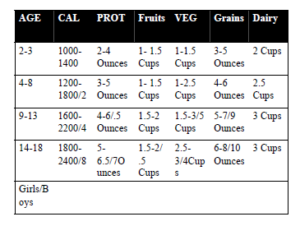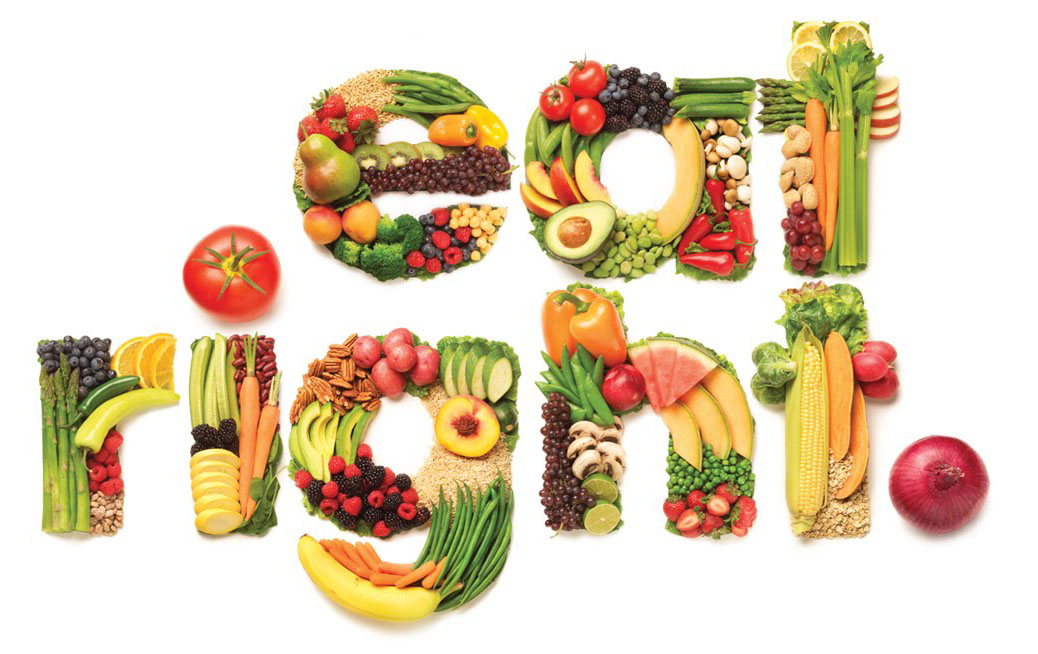Say No to Salt
High sodium consumption >2-5 grams/day and insufficient potassium intake (less than 3.5 grams/day) contribute to high blood pressure and increase the risk of heart disease and stroke. Most people consume too much salt—on average 9–12 grams per day, or around twice the recommended maximum level of intake. Salt intake of less than 5 grams per day for adults helps to reduce blood pressure and risk of cardiovascular disease, stroke and coronary heart attack.
Guidelines for a healthy diet
- Proteins
- Fruits
- Vegetables
- Grains
- Dairy
- Sugar
- Saturated & Trans Fats
Fasting Health
Obesity
Worldwide obesity has more than doubled since 1980. In 2014, more than 1.9 billion adults, 18 years and older, were overweight. Of these over 600 million were obese.41 million children under the age of 5 were overweight or obese in 2014.Obesity is preventable.
Healthy Eating
Guidelines for Calories by Age

What to Order from a Food Menu?
Conditions that Require Diet Changes
- Acute Illness
- Chronic Diseases
- Inactive Status
- Infectious Diseases
- Pregnancy
- Infancy
- Young Adults
Diseases from Farm Animals

- Different types of farm animals can carry different diseases. For example, cows and calves can carry the bacterium Escherichia coli. This germ can cause bloody diarrhea in people. Pigs can carry the bacterium Yersinia enterocolitica which causes the disease yersiniosis. Chickens can carry bacteria such as Salmonella which causes the disease salmonellosis.
What are the most common foodborne diseases?
The most commonly recognized foodborne infections are those caused by the bacteria Campylobacter, Salmonella, and E. coli, Shigella, hepatitis A, and the parasites Giardia lamblia and Cryptosporidia.E. coli is a bacterial pathogen that has a reservoir in cattle and other similar animals. Human illness typically follows consumption of food or water that has been contaminated with microscopic amounts of cow feces.
Foodborne Diseases
- Consuming contaminated foods or beverages.
- More than 250 different foodbornediseases have been described. Most of these diseases are infections, caused by a variety of bacteria, viruses, and parasites that can be foodborne. Other diseases are poisonings, caused by harmful toxins or chemicalsthat have contaminated the food, for example, poisonous mushrooms.
 Diseases Related to Travel
Diseases Related to Travel
- Cholera
- Tuberculosis
- AIDS/HIV
- Diarrhea
- Malaria
- Dengue Fever
- H1N1 & MERS CoV
- Meningitis
- Zika
Factors in Disease Spread

Global Warming & Public Health
- Heat—heat cramps, heat syncope (fainting),heat exhaustion, and heatstroke
- Exposure to air pollution canaggravate chronic respiratory and cardiovasculardisease, damage lung tissue, lead to premature deaths
- There is growing evidence that rising global mean temperatures are impacting both the timing and abundance of airborne allergens, especially pollen
Global Warming
- Vector-borne diseases result from infections
- Transmitted to humans primarily by blood feedingarthropods such as mosquitoes, ticks, and fleas
- Death and injury are the direct health impactsmost commonly associated with extreme weather
- Surface waters became pollutedby runoff carrying human and animal wastes,pesticides, fertilizers, and other pollutants.29
Cigratte and Cancer
- A key mechanism by which smoking trigger genetic changes that cause lang cancer has been unraveled
- Research have shown exposure to cigratte smoke slown production of a protein called FANCD2 in lung cells

If you have any questions or need a referral
Contact us for referrals
Consult & Referral



 Diseases Related to Travel
Diseases Related to Travel
